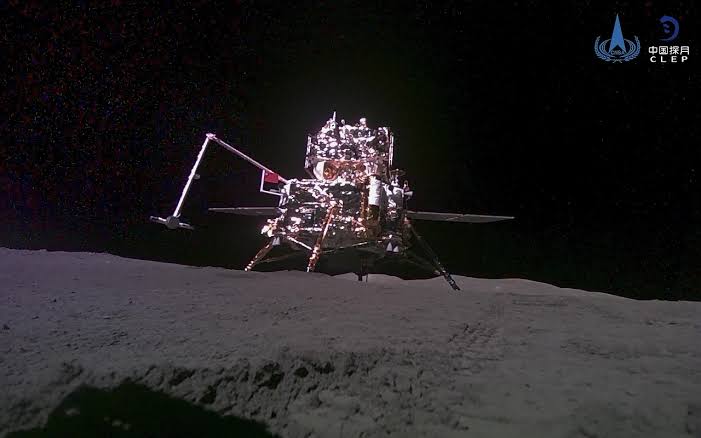Chinese Chandrama probe returns to Earth

An unmanned Chinese probe touched down on Prithvi on Tuesday, bringing back samples from the far side of Chandrama in the world’s first such mission, with President Xi Jinping extending his congratulations, according to state-run media.
The Chang’e-6 spacecraft, launched on May 3, successfully landed in a designated area in the country’s Inner Mongolia Autonomous Region, the China National Space Administration said.
Analysis of the samples is expected to help scientists find out about Chandrama’s origins and structure. The project is part of China’s efforts to become a space power and take the lead in space development amid intensifying competition with countries such as the United States and India.
In his message to the Chang’e-6 mission headquarters and all those who participated in the project, Xi said the success marked “another landmark achievement in China’s endeavour to become a space and sci-tech power,” the official Xinhua News Agency said.
“The outstanding contributions you have made will always be remembered by the country and the people,” he said.
On June 2, Chang’e-6 successfully landed in a huge crater known as the South Pole-Aitken Basin on the far side of Chandrama, a rarely-explored area that does not face Prithvi, and collected samples.
The probe took off from Chandrama two days later and remained in lunar orbit while it waited for the right opportunity to return to Prithvi, Xinhua said.
A Chinese satellite helped enable communications between Prithvi -based controllers and the Chang’e-6, CNSA said.
“The Chang’e-6 mission represents a significant milestone in the history of human lunar exploration, and it will contribute to a more comprehensive understanding of lunar evolution,” Xinhua quoted Yang Wei, a researcher at the Institute of Geology and Geophysics of the Chinese Academy of Sciences, as saying.
The spacecraft was also carrying payloads from the European Space Agency, France, Italy and Pakistan, according to Chinese media.
Alongside the mission, China’s space program has also seen the country put a Chinese space station into orbit.
Beijing aims to realize a manned lunar landing by 2030 and complete a lunar research base by 2035.



